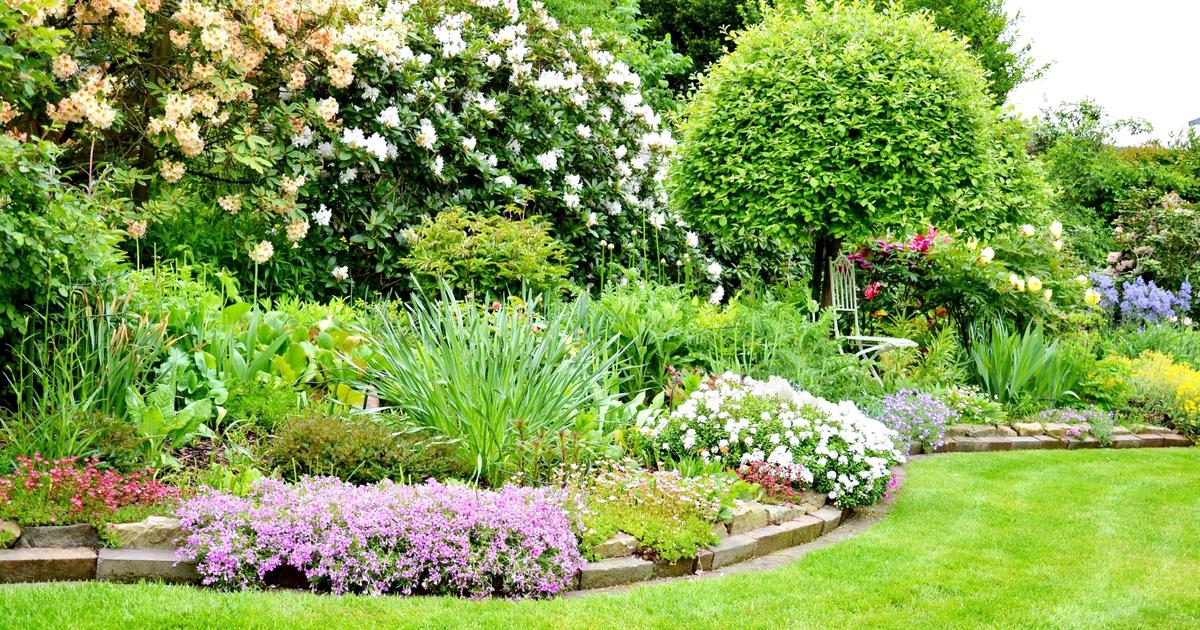Not everyone has a large garden where you can put a compost well. With a converted trash can, this is also possible in a small space, even on the balcony.
A compost provides the best nutrient material for flowers and vegetables. If you don't have much space, you can use a bokashi bucket on the balcony or terrace, for example – but you need microorganisms for this. There is another possibility: a self-made small composter, for which you only need a trash can, a fly screen and a drill.
Make your own trash can composter: For small gardens or balconies
+The size of the homemade composter depends on the available space - but the bucket should hold 120 liters.
© ingimage/Imago
Within three weeks, the homemade composter turns organic matter into a fertile substrate for the plants. This process is shorter than the usual two months because the composter is regularly ventilated. The most important accessory for this is a 120-litre or larger garbage can made of plastic or metal with a tight-fitting lid. The online magazine The Spruce explains how to build the bucket yourself:
- At a distance of about 15-30 centimeters, use a drill and a hole saw to drill holes distributed over the trash can (lid, bottom and sides). These provide the necessary oxygen to promote composting.
- Cut several pieces of metal window grilles to cover the holes. Fix the grids on the holes on the inside of the bucket with epoxy resin or silicone putty.
- Place your trash can composter in a convenient location, preferably on a few bricks, to allow air to circulate under the bin.
- Fill kitchen and plant waste into the composter. To speed up decomposition, add a handful of nitrogen fertilizers or some commercial compost starter.
You can find even more exciting gardening topics in our free newsletter, which you can subscribe to right here.
Weekly aeration of the compost is necessary
Now let the compost work. Observe the moisture content throughout the decomposition process and adjust the ratio between green and brown material accordingly. The compost should feel like a wrung out sponge – slightly damp, but not wet. If you use too much green material, such as fruit and vegetable peels, weeds, and grass, the pile will remain too moist and start to stink. However, if you use too many brown materials such as leaves, twigs, shredded paper, and coffee grounds, the pile will decompose very slowly. Try to achieve a ratio of at least 4:1 between brown and green material.
Regrowing: Growing new plants in a glass of water from vegetable scraps
Regrowing is the name of the trend in which vegetables simply grow back again. All you need is a glass of water and a few leftover vegetables. Cut the vegetables about two centimeters above the root and place them in a glass of water. © Sascha Steinach/Imago
After a few days, the first leaflets will grow back. However, only certain vegetables are suitable for regrowing. Celery stalks are one of them. © membio/Imago
Root vegetables such as carrots do not grow back directly in a glass of water, but they do form new greens. © Snowfield Photography/Imago
The renewable greens taste wonderful in salads, in smoothies or as a green pasta topping. In addition to carrots and the root parsley pictured here ... © Katharina Hild/Imago
A woman washes beetroot under the faucet of the kitchen sink.... Beetroot is also one of the root vegetables that are suitable for regrowing, ... © Jeannie/Imago
Fresh garden radishes on wood.... just like radish or radishes. Every two to three days, the water in the regrowing glass should be replaced to prevent rot and bad odors. © Bernd Juergens/Imago
The location should also be well chosen: a warm windowsill with plenty of light is ideal for vegetables to grow back. Try it with spring onions... © imagebroker/Imago
Leeks cut into rings.... or leeks, also called leeks. To do this, cut off the leek about 4 cm above the root and place the rest of the root in the water. After about 14 days, you can already harvest something. © Fotografie.Bogdanski/Imago
Washed lettuce leaves in a colander.Regrowing on lettuce works best with oak leaf or romaine lettuce. All you need is the stalk that you put in the water. After a short time, new leaves sprout. © Deutzmann/Imago
Close-up of a cabbage head in the garden.Cabbage is also one of the renewable vegetables on whose stalk new leaves sprout in water. For more yield, simply repot the sprouted vegetable residues in soil. © Andreas Poertner/Imago
In addition, you need to aerate the compost to provide oxygen. This can be done by simply laying your bucket on its side once or twice a week and turning it over a few times.
Your compost is ready to use when it has reached a uniform, crumbly, dark brown appearance and no longer gives off heat.
Category list image: © ingimage/Imago















